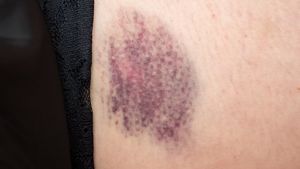YOGYAKARTA Hypervitaminosis or vitamin A poisoning occurs when too many vitamins are in the body. Acute vitamin toxicity or poisoning occurs after consuming large amounts of vitamin A and short times. If you experience it, usually in a few hours or a day consuming too much vitamin of this type. If you are poisoned chronically, it occurs when a large amount of vitamin A accumulates in your body over a long period of time.
Symptoms of vitamin A poisoning include changes in vision, bone aches, and skin changes. The chronic toxisity, can cause liver damage and increase stress on your brain. Most people who experience it, will improve only by reducing the intake of vitamin A.
The cause of hypervitaminosis A, launched Healthline, Sunday, December 3, is because the amount of excess vitamin A stored in the liver is accumulated over time. Most people who experience vitamin A poisoning, because they take high-dose food supplements. Generally, because of megavitamin therapy with the aim of preventing or treating disease. In addition, hypervitaminosis A can also be due to the use of certain long-term acne treatments that contain high-dose vitamin A.
If hypervitaminosis A occurs in children, it is usually caused by accidental consumption. Although vitamin A is important for the development of the heart, ears, eyes, and body parts in the fetus, it is necessary to pay attention to the daily safe dose of consumption. You can get sources of vitamin A from the liver, fish and fish oil, milk, eggs, dark fruits, green leafy vegetables, orange and yellow vegetables such as sweet potatoes and carrots, tomatoes, and some vegetable oils. According to the National Institutes of Health (NIH), vitamin A needs to be fulfilled every day with the following safe dose:
Consuming more than the recommended daily amount for several months can cause vitamin A poisoning. This condition can occur more quickly in infants and children because their bodies are smaller.
Symptoms of hypervitaminosis A, can vary based on the level of toxicity, which is known to be acute or chronic. Symptoms of acute vitamin A poisoning include drowsiness, irritability, stomach pain, nausea, vomiting, and increased pressure on the brain. For chronic symptoms of vitamin A poisoning, include blurred vision or changes in vision, bone swelling, bone pain, bad appetite, dizziness, nausea and vomiting, sensitivity to sunlight, dry and rough skin, itchy or peeling skin, cracked nails, skin cracks in the mouth corner, circumventance, yellowing skin, hair loss, respiratory infection, and confusion.
SEE ALSO:
If hypervitaminosis A is experienced by children, the symptoms include prominent eyepieces, inability to increase weight, coma, multiple vision, prominent soft spots at the top of the baby's skull, and germination of skull bones. Excess vitamin A also has the potential for complications, including causing liver damage, osteoporosis, excessive calcium buildup, and kidney damage.
To diagnose hypervitaminosis A, symptoms and history can be recognized. This is done by a doctor who may need a blood test to check the levels of vitamin A in the blood. The most effective way to overcome this condition is to stop taking high-dose vitamin A supplements. In a few weeks, it will recover naturally. However, it is very important to recognize the initial symptoms so that they are treated quickly and do not trigger complications.
The English, Chinese, Japanese, Arabic, and French versions are automatically generated by the AI. So there may still be inaccuracies in translating, please always see Indonesian as our main language. (system supported by DigitalSiber.id)













